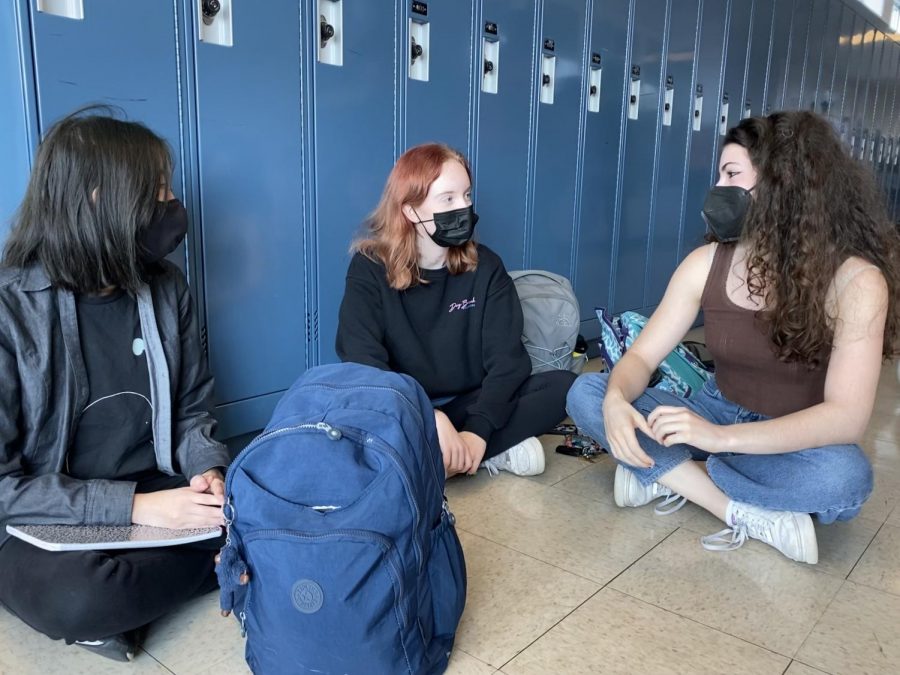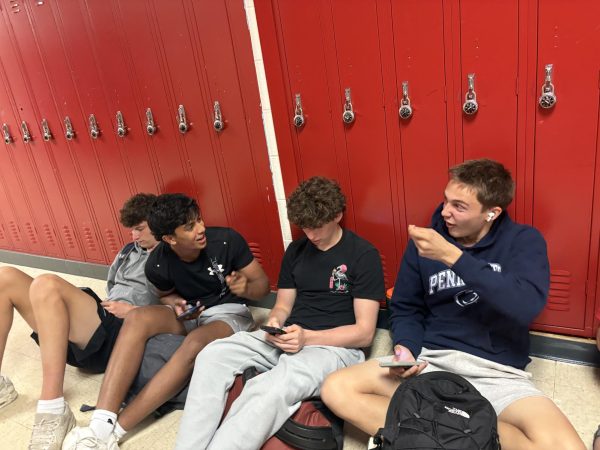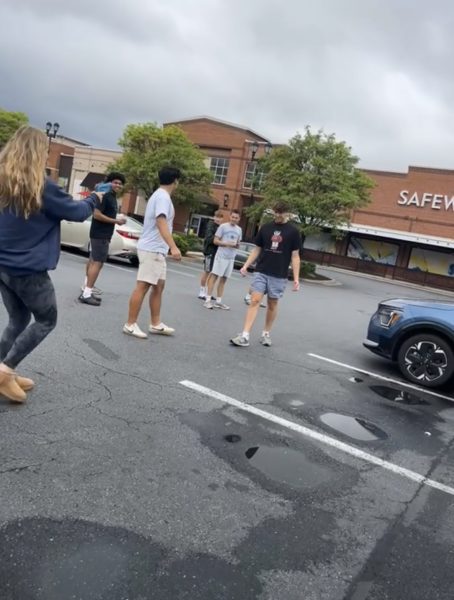Fight against COVID-19 continues; hoping to prevent another spike
Juniors Kate Thepnorarat, Rachel Nanos and Maddie Press wear their masks after finishing their lunches to keep each other safe.
Students and staff brace themselves for a possible spike in Covid-19 cases as fall approaches, bringing colder temperatures and the holiday season with it. Here are five easy steps you can take to help keep yourself and everyone around you safe at school in the coming months.
Step One: Wear your mask. Covid-19 is transmitted when tiny particles are shot into the air from an infected person’s nose or mouth while they are coughing, sneezing or even just speaking. These particles can be breathed in by anyone within three to six feet, so it is important to wear your mask to catch these particles from spreading into the air. “Be diligent about wearing your mask,” Class of 2023 Administrator Nick Hitchens said. “Make sure it’s over your mouth, over your nose and that it’s on at all times except when you’re eating.”
Students have been conscientious about complying with mask guidelines, but no measure is 100% effective. “I feel like we’re doing a good job keeping masks on in classes,” sophomore Margo Brown said. “But still, I’m sometimes in classes with people who take down their mask to sneeze or cough violently.”
Step Two: Social distance. The Centers for Disease Control and Prevention (CDC) recommend keeping a minimum of three feet between you and other people to reduce the spread of those infected particles in crowded public spaces. “Whenever you can, you should opt to do things outside,” Hitchens said. “We didn’t used to be able to eat lunch on the field, but now, if the weather is nice, eat outside.”
Principal Kimberly Boldon has concerns about social distancing during lunch as winter approaches. “We utilize outdoor spaces a lot,” Boldon said. “And we don’t know when that will be compromised because it gets too cold. But I will say, I’ve seen kids outside in all kinds of temperatures.”
Step Three: Wash your hands. Touching your phone, Chromebook, pencil or other shared surfaces like doorknobs can transfer germs to your hands, which can get into your body when you touch your face. “I’m a healthy teenager,” Brown said. “So for me specifically, covid isn’t that much of a risk, but I wash my hands frequently because I’m worried about passing germs to other people who are possibly at higher risk like my grandparents.”
Step Four: Stay Home. If you have a fever, chills, cough, shortness of breath or difficulty breathing, loss of taste or smell, sore throat or overall you just feel sick, take the day off from school. “What I worry about is students pushing themselves too hard because they’re involved in so many things, and they do feel a weight of responsibility,” Boldon said. “It’s hard to get that mindset to shift; if you’re not feeling well, you’re entitled to stay home, you’re entitled to feel better. But [staying home] is also an act of kindness in terms of protecting the community.”
Step Five: Focus on your mental health. Thanksgiving and winter break are meant to be relaxing breaks from school and stress, so if you’re feeling anxious about a possible increase in Covid cases due to travelling for vacation, talk to someone about it. “It’s important to acknowledge that fear,” Boldon said. “We are still in a pandemic, and this has been a really traumatic event for our entire community. I think that we have to process it by both doing what we can do within our control, but also understanding where that fear is coming from. We have to acknowledge that those feelings are incredibly valid.”
Aside from getting vaccinated, these are the next best steps you can take to protect yourself and your classmates from Covid-19. “I think that they’re all important even if they’re not 100% effective,” Brown said. “Like, if you go outside on a cold day, there’s always a chance you’re going to get hypothermia, but wearing a jacket decreases that by a large portion. So even if things don’t fully get rid of the possibility of being infected, it’s still important just to keep you and those around you safer.”
Your donation will support the student journalists of Thomas S. Wootton High School. Your contribution will allow us to purchase equipment and cover our annual website hosting costs.
Catie is a 2023 graduate.







